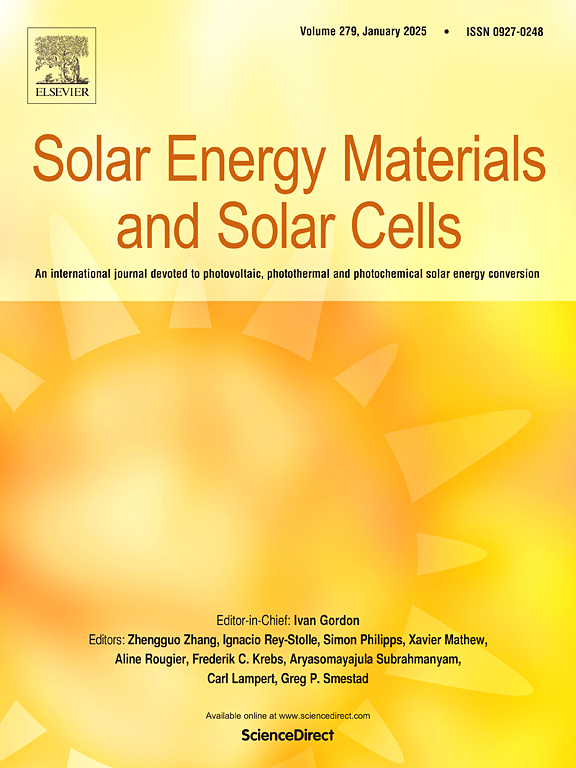Optimization of different composite sorption materials and their thickness for enhanced PV cooling performance: A multiphysics simulation approach
IF 6.3
2区 材料科学
Q2 ENERGY & FUELS
引用次数: 0
Abstract
The integration of sorption materials into photovoltaic thermal (PVT) systems has gained attention as an effective strategy for enhancing performance. Sorption materials play a multifunctional role by providing thermal regulation, enhancing heat transfer, and reducing PV module operating temperatures. This study presents a novel contribution in two key areas: the selection and evaluation of composite sorption materials—Silica Gel-CaCl2, Zeolite X13-CaCl2, and Hydrogel PAM-LiCl—as an advanced cooling solution for PVT systems, and the use of a comprehensive numerical approach via COMSOL Multiphysics to simulate their thermal behavior under different material thicknesses (1, 2, and 3 cm). By combining innovative material selection with an advanced computational framework, this work bridges a critical gap in the literature, offering a systematic evaluation of how composite sorption materials can optimize PVT performance and improve overall energy efficiency. The results show that Silica Gel-CaCl2 with 3 cm thickness can achieve the most significant temperature reduction, lowering the PV temperature from 69.33 °C to 38.96 °C at noon, while Zeolite X13-CaCl2 reduced it to 53.80 °C. These materials also positively influenced PV efficiency, with the highest overall thermal efficiency recorded for 3 cm thickness—13.70 % for Zeolite X13-CaCl2 and 13.95 % for Silica Gel-CaCl2. The study emphasizes the importance of selecting the optimal thickness, with thicker layers (2–3 cm) proving to be more effective during midday, when solar radiation is at its peak. Additionally, thinner layers (1 cm) performed better in the early morning hours. The findings suggest that optimizing Silica Gel-CaCl2 with 3 cm thickness can provide an effective solution to enhance the performance of PVT systems, particularly in areas with high solar intensity.
求助全文
约1分钟内获得全文
求助全文
来源期刊

Solar Energy Materials and Solar Cells
工程技术-材料科学:综合
CiteScore
12.60
自引率
11.60%
发文量
513
审稿时长
47 days
期刊介绍:
Solar Energy Materials & Solar Cells is intended as a vehicle for the dissemination of research results on materials science and technology related to photovoltaic, photothermal and photoelectrochemical solar energy conversion. Materials science is taken in the broadest possible sense and encompasses physics, chemistry, optics, materials fabrication and analysis for all types of materials.
 求助内容:
求助内容: 应助结果提醒方式:
应助结果提醒方式:


